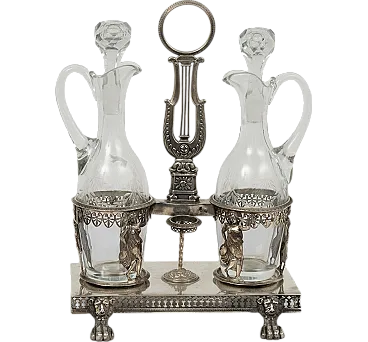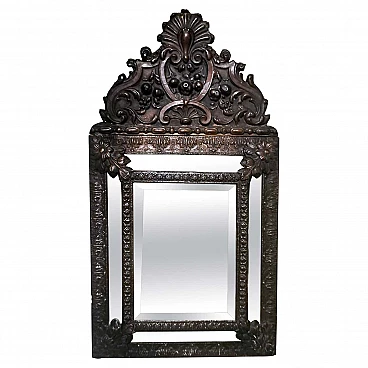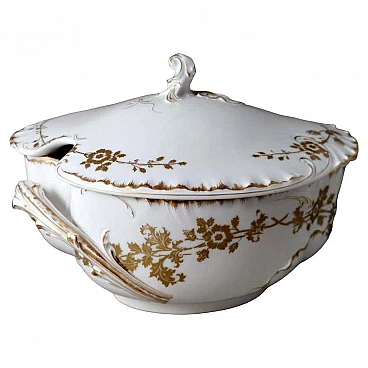This elegant and refined oval tray, made of high-quality silver plate (Hard Metal), features a perfectly symmetrical shape. The border includes a delicate railing that rises slightly at the ends, designed to accommodate the shaped openings of the handles, ensuring a consistent and sophisticated aesthetic throughout the piece. The hallmarks on the underside confirm that the tray was produced in the late Victorian style between 1896 and 1898 by the renowned silverware firm Maxfield & Sons of Sheffield. (see page 89 mark no. 209 of the volume “Sheffield & Birmingham Victorian Electroplaters ook of Mark by Andrea de Giovanni Edizioni EMI 1991). The silver plating was achieved through an electroplating process that involved immersing the hard metal object in a solution of potassium cyanide and silver. The meticulously cleaned and prepared piece was held in place with copper wires in the solution, through which a gentle electric current (1-1.5 volts) was passed. Ensuring the item was perfectly clean and free of any grease was crucial. During the electrolytic deposition, the operator gently moved the piece to achieve uniform coverage. The thickness of the silver layer varied according to specific requirements. For a thickness akin to tissue paper, considered a high-quality level of plating, the item needed to remain in the bath for approximately one and three-quarters to two and a half hours. After removal from the bath, the item appeared white like porcelain. To reduce this whiteness and impart a silvery shine, the surface was first treated with an abrasive paste applied with a cotton cloth. This was followed by "rossetto" (a fine abrasive based on red iron oxide) applied using rotating felt discs, and finally, a final application of "rossetto" performed entirely by hand. This method allowed the silvering of various metals or alloys suitable for electroplating, such as brass and alpaca, but especially "nickel silver." This term refers to a group of copper alloys containing approximately 20% nickel and 5-10% zinc, with the remainder being copper. "Nickel silver" or "Hard Metal" was valued for its excellent mechanical strength, exceptional corrosion resistance, and silver-like appearance. Leading British manufacturers of silver-plated items preferred this metal, as it was more costly but provided greater long-term reliability. Founded around 1855, Maxfield & Sons operated actively at the turn of the 19th century with their Enterprise Works factory on Arundel Street in Sheffield and a showroom in London at 47 Beak St, Regent Street, with Joshua Maxfield as senior partner. In 1901, Maxfield & Sons, along with associated firms J. & J. Maxfield and W. Mammatt & Sons, merged to form a limited liability company under the name J. & J. Maxfield Ltd, before being reorganized in 1908 as Maxfield & Sons (Silversmiths) Ltd. The company used a figurative trademark of a left-facing beaver, similar to those used by associated companies W. Mammatt & Sons and John Sherwood & Sons of Birmingham, as well as by the Australian retailer Fairfax & Roberts, active in Sydney during the 1920s. Our finely crafted tray embodies harmonious classicism with strength and personality, making it an ideal addition to any table setting or home decor. Its timeless elegance complements both classic and modern styles seamlessly. The tray is in good condition considering its 116 years. Dimensions: length 56 cm, width 39 cm, height 5 cm.








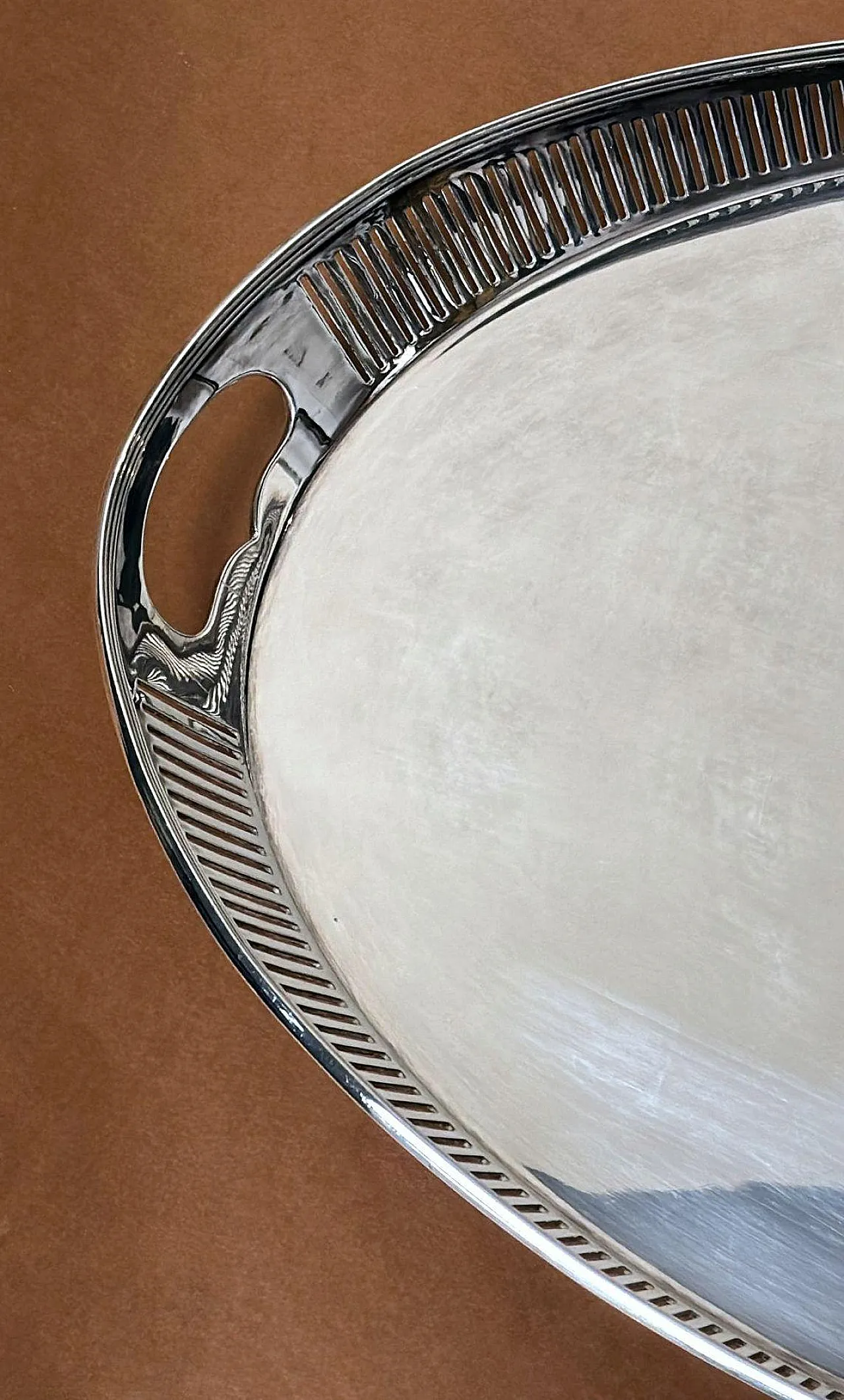




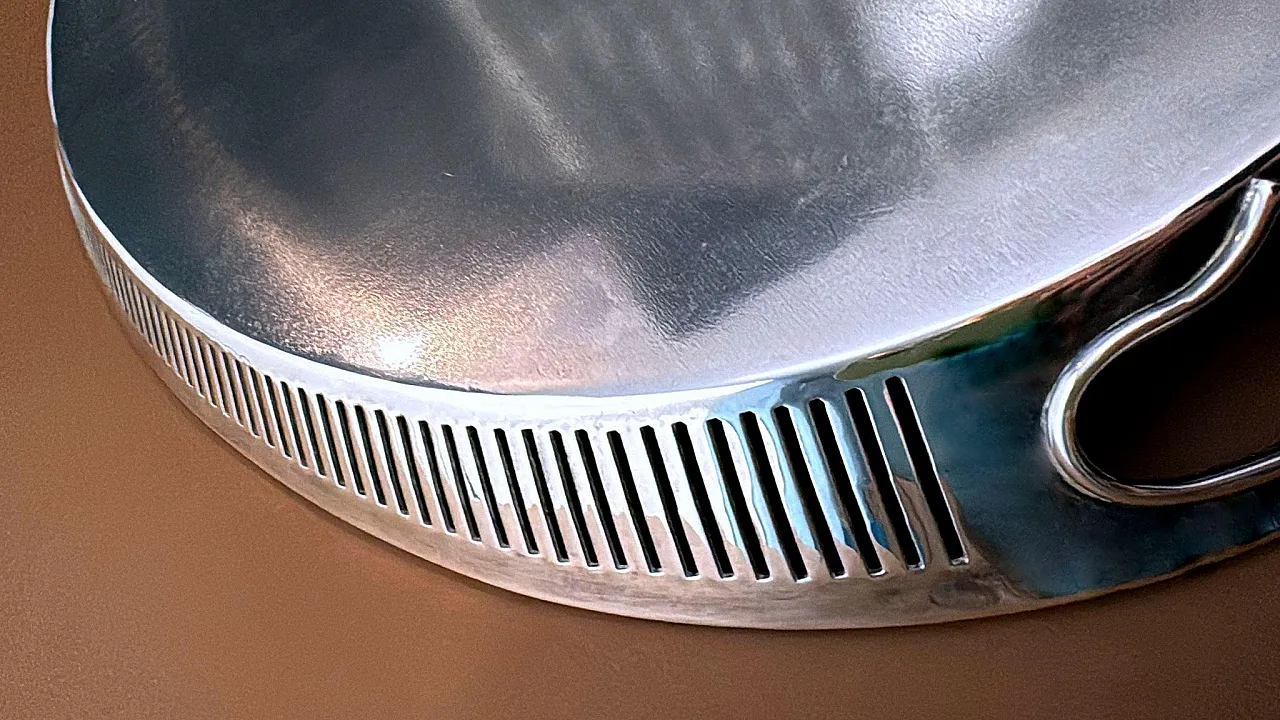


 SILVER Seller in Prato, Italy
SILVER Seller in Prato, Italy






.png)









